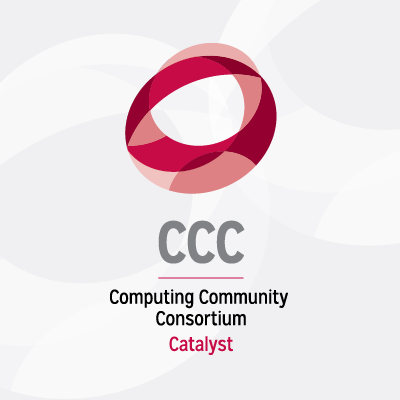
Computing innovations have the power to save lives, and there are few applications where the promise of computing is more clear than in the healthcare domain. At the recent CCC Computing Futures Symposium, panelists Susan K. Gregurick, (National Institutes of Health (NIH)), Andy Kilianski (Advanced Research Projects Agency for Health (ARPA-H)), Mona Singh (Princeton University), and Tammy Toscos (Parkview Health), in a discussion moderated by Sharon Gillett (Microsoft), discussed how computing, including AI, can revolutionize patient care – from precision medicine and oncology to overcoming critical barriers in health data sharing.
Unleashing the Power of Health Data and Computing
Gregurick highlighted the sheer scale of health data now available. The National Institutes of Health (NIH) stewards hundreds of petabytes of information, partnering with tech giants and other federal agencies to make this data a powerhouse for discovery. Initiatives like the National AI Research Resource (NAIRR) pilot are already tackling ambitious projects: generating synthetic EHR data for research, democratizing AI for cancer detection (aiming to slash registering cancer data timelines from years to months using AI algorithms), and even developing AI chatbots to answer complex biological questions. NIH is also investing in initiatives aimed to,
- Leverage quantum computing’s unique capabilities to tackle complex biomedical challenges and drive practical applications
- Enhance utilization of cloud and hybrid computing architectures
- Support efficiencies and sharable technologies across NIH data platforms
- Harmonize policies for data federation for data use across resources
- Ensure a robust and connected data resource ecosystem
- Explore new paradigms in computing
This computational power, paired with the reduced cost of genome sequencing, is fueling a revolution in how we approach diseases, which was covered in Singh’s presentation. In precision oncology, the dream is to move beyond one-size-fits-all treatments. By sequencing a patient’s tumor, integrating it with their health records, and applying sophisticated algorithms, clinicians could soon identify the most effective, targeted therapies.
Similarly, Toscos emphasized the incredible evolution of diabetes management showcasing the tangible, life-changing impact of computer science– from bulky glucose meters and backpack-sized insulin pumps to tiny, AI-driven continuous glucose monitors (CGMs) and the promise of an “artificial pancreas”. People living with type 1 diabetes now have a chance at living to normal life expectancy due to advances in computer science, which is just one example of many on-the-body and embedded technologies that augment functions of the human body.
Pushing the Boundaries
Kilianski explained how ARPA-H is pushing these boundaries further with “health moonshots,” aiming to make biomedical R&D vastly more productive. Specifically, they are leveraging some of the AI advances with more mechanistic and physics based models to understand Protein Protein interactions and dynamics within our immune system, and exploring replacing traditional animal models with computational methods. He emphasized the incredible promise of interdisciplinary, data-driven health and computing research at scale: “if we’re successful, we’ll be able to turn health outcomes around immediately for direct patient impact.”
A healthier future where diseases are predicted before they strike, treatments are tailored to your unique genetic makeup, and managing chronic conditions is seamlessly integrated into your life, is possible but the path to this technologically advanced healthcare future isn’t without its hurdles. The panelists underscored significant areas where further research is needed:
- Data Dilemmas: Health data, while abundant, is often siloed, messy, and raises critical privacy concerns. Ensuring datasets are representative of diverse populations is paramount to avoid bias.
- The Human Element: Technology is only as good as its adoption. Human behavior – from a patient’s willingness to use a device to a clinician’s integration of new tools into workflows – remains a major factor.
- Bridging the Gaps: Interdisciplinary collaboration is key, yet often difficult. Legal and bureaucratic hurdles can slow the deployment of innovative solutions within established health systems.
Collaborating for a Healthier Future
Despite these challenges, the overarching message of the panel was one of immense potential. The experts emphasized that translating these computational advancements into widespread patient benefit requires a concerted effort: fostering partnerships, creating better data infrastructures, training a new generation of researchers fluent in both computer science and medicine, and developing robust and ethical AI health models.
A recording of the “Shaping the Future of Computing and Healthcare” panel will be available next month, along with recordings and blogs highlighting the other panel and keynote sessions from the Computing Futures Symposium. Keep an eye out for this exciting content!
Also, if you enjoyed this content we encourage you to check out the CRA/CCC Enabling the AI Revolution in Healthcare Quad Paper and the CRA-I Sharing Healthcare Data Workshop Report for more fascinating insights about Healthcare and Computing from the CRA community.









